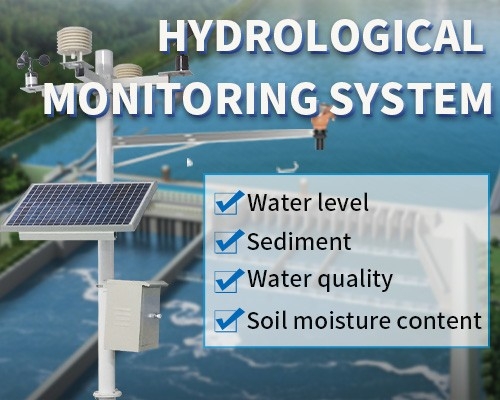In the bustling heart of modern cities, urban streams often serve as the unsung heroes of the urban ecosystem. They provide essential drainage, contribute to the local water table, and offer aesthetic and recreational value to residents. However, beneath their often-charming surfaces, these streams can harbor a multitude of pollution concerns that pose significant risks to both human health and the environment. Thanks to advanced water quality detectors, scientists and environmentalists are now uncovering the extent of these pollution problems, prompting urgent calls for action to protect and restore these vital water bodies.

The Rise of Urban Stream Pollution
Urbanization has brought about numerous benefits, including improved infrastructure, economic growth, and access to amenities. However, it has also led to a surge in pollution, particularly in urban streams. The rapid development of cities often results in the paving over of natural landscapes, reducing the soil’s ability to absorb rainwater and increasing runoff. This runoff carries pollutants such as oil, grease, heavy metals, and bacteria from roads, parking lots, and industrial sites directly into urban streams.
Moreover, stormwater management systems, designed primarily for drainage rather than water quality protection, often channel this contaminated runoff into streams without adequate treatment. The combination of these factors has led to a significant decline in the quality of urban stream water, with many now containing levels of pollutants that exceed safe limits set by regulatory authorities.
The Role of Advanced Water Quality Detectors
Traditional water quality testing methods, such as grab sampling and laboratory analysis, have been the cornerstone of water quality monitoring for decades. However, these methods are often time-consuming, labor-intensive, and limited in their ability to provide real-time data. With the advent of advanced water quality detectors, this paradigm is shifting.
These detectors, often referred to as “sensors” or “monitors,” utilize cutting-edge technology to measure a wide range of water quality parameters in real-time. They can detect contaminants such as dissolved oxygen, pH levels, temperature, turbidity, nutrients (like nitrogen and phosphorus), heavy metals, and even microplastics. Some detectors even employ spectroscopy or mass spectrometry to identify specific chemicals or compounds present in the water.
One of the key advantages of these advanced detectors is their ability to provide continuous, real-time data. This allows for the immediate identification of pollution events, enabling quicker response times and more effective pollution control measures. Furthermore, the data collected can be analyzed using sophisticated software to identify trends, hotspots, and potential sources of pollution.
Case Study: Uncovering Pollution in Urban Streams
To illustrate the impact of advanced water quality detectors, let’s consider a case study from a mid-sized city in the United States. The city, which has seen rapid urbanization in recent years, is home to several urban streams that run through residential, commercial, and industrial areas. In the past, these streams were known for their clear water and diverse aquatic life. However, recent complaints from residents about the smell and appearance of the water prompted the city’s environmental agency to investigate.
Using advanced water quality detectors, the agency conducted a comprehensive assessment of the streams. The detectors revealed high levels of nutrients, particularly phosphorus and nitrogen, which are known to cause algae blooms and reduce water clarity. They also detected the presence of heavy metals such as lead and cadmium, likely originating from industrial discharges and aging infrastructure. Additionally, the detectors identified elevated levels of bacteria, indicating potential fecal contamination from stormwater runoff and sewage overflows.
Armed with this data, the city’s environmental agency was able to pinpoint specific areas of concern and develop targeted pollution control measures. They worked with local industries to improve their waste management practices, implemented stormwater management strategies to reduce runoff, and upgraded aging sewage infrastructure to prevent overflows. The agency also launched a public awareness campaign to educate residents about the importance of keeping urban streams clean and free of pollutants.
Challenges and Opportunities
While advanced water quality detectors have revolutionized the way we monitor urban stream pollution, they also present some challenges. The high cost of these detectors can be a barrier for many municipalities, particularly those with limited budgets. Additionally, the complexity of the technology requires specialized training and maintenance to ensure accurate and reliable data.
Despite these challenges, the opportunities presented by advanced water quality detectors are vast. By providing real-time data and insights into the health of urban streams, these detectors can help drive policy changes, inform investment decisions, and inspire community action. They can also play a crucial role in the development of adaptive management strategies, allowing for the continuous improvement of water quality monitoring and pollution control efforts.
Conclusion
Urban streams are vital components of the urban ecosystem, providing essential services and contributing to the overall quality of life in cities. However, they are increasingly threatened by pollution from a variety of sources. Advanced water quality detectors offer a powerful tool for uncovering these pollution concerns and driving action to protect and restore urban streams.
As cities continue to grow and evolve, it is essential that we prioritize the health of our urban streams. By investing in advanced water quality monitoring technology, we can gain a better understanding of the pollution challenges we face and develop effective solutions to address them. Together, we can ensure that our urban streams remain clean, healthy, and vibrant for future generations.